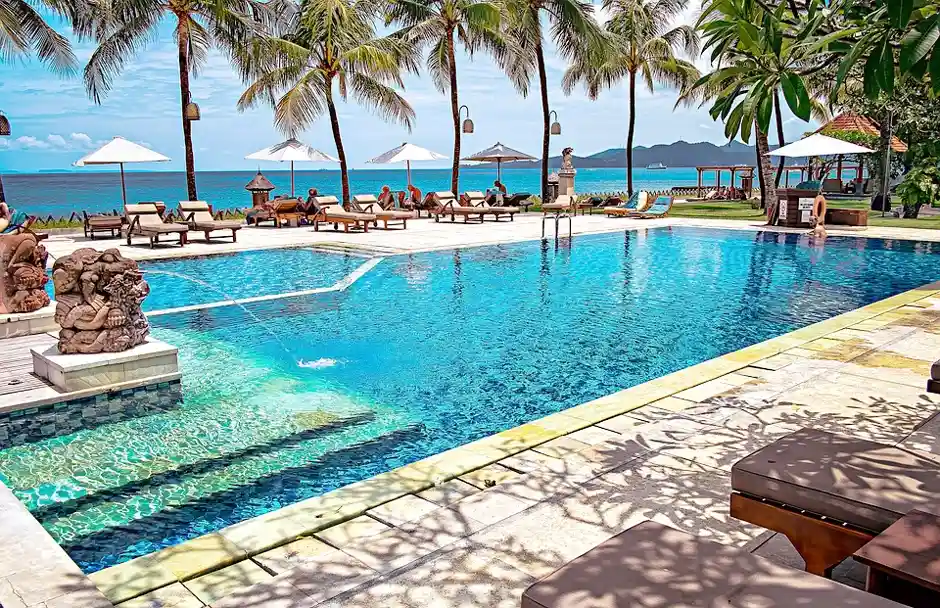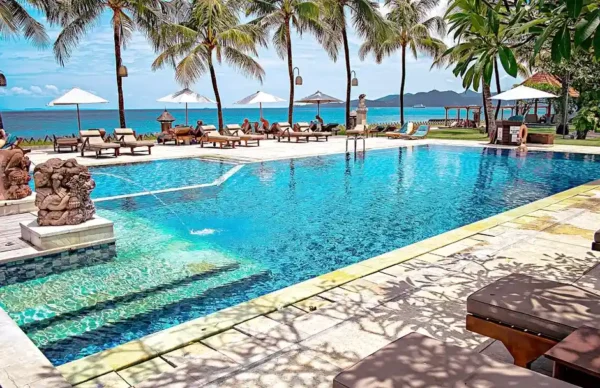Introduction
Swimming pools are a staple of leisure and recreation in many homes and commercial spaces. The choice of pool coating significantly affects a pool’s appearance and longevity. Rama Pool Coatings has emerged as a top choice for pool owners looking for durability and aesthetic appeal. This guide explores everything you need about Rama Pool Paint, from types to application techniques.

Types of Rama Pool Coatings
Epoxy Coatings
Epoxy is one of the most durable types of Rama Pool Paint. It is known for its resistance to chemicals and UV rays, making it an ideal choice for indoor and outdoor pools. Epoxy coatings are also non-porous, which prevents algae growth and makes the pool cleaner and more accessible.
Polyurethane Coatings
Polyurethane coatings are another popular option under Rama Pool Finishes. These coatings are flexible, which makes them resistant to cracking and chipping. They are also UV stable, ensuring the color does not fade. “Komodo Island Daytrip Private“
Acrylic Coatings
Acrylic coatings are water-based and are the most cost-effective option among Pool Resurfacing. They are easy to apply and dry quickly, making them an excellent choice for quick renovation projects. However, they may require more frequent reapplication compared to epoxy and polyurethane.
Benefits of Choosing Rama Pool Coatings
Longevity and Durability
Rama Pool Coatings are designed to withstand harsh pool chemicals and weather conditions, extending the life of your pool surface surfaces.
Aesthetic Flexibility
With various colors and finishes, Rama Pool Paint allows you to customize the look of your pool to match your aesthetic preferences or to complement your landscaping.
Improved Safety
Many Rama Poolside Coatings have anti-slip properties, enhancing safety around the pool area, especially when wet.
Application Process
Preparation
The first step in applying any Rama Pool Paint involves thoroughly cleaning and preparing the pool surface. This may include patching cracks and ensuring the surface is smooth.
Primer Application
Coating Application
The Rama Pool Coatings are then applied using rollers, brushes, or spray equipment, depending on the type of coating selected. It is essential to follow the manufacturer’smanufacturer’s instructions for the best results.
Curing
After application, Rama Pool Coatings requires a curing period before the pools can be refilled with water. This curing time varies based on the type of coating and environmental conditions.
Maintenance of Rama Pool Paint
Regular maintenance is critical to extending the life of Rama Pool Paint. This section covers cleaning techniques and inspection tips to keep your coated pool in top condition.
Routine Cleaning
Use soft brushes and mild detergents to clean the pool. Avoid harsh chemicals that can damage the coating.
Periodic Inspection
Regularly inspect the coating for signs of wear or damage. Early detection of issues can prevent extensive repairs.
Repair and Touch-Ups
Use touch-up kits designed explicitly for Rama Pool Coatings for minor scratches or chips. It may be necessary to recoat the affected area for more significant issues.
Conclusion
Rama Pool Coatings offers an excellent balance of durability, aesthetics, and safety for Poolside owners. By choosing the right type of coating and adhering to proper application and maintenance procedures, you can significantly enhance the life and beauty of your pool. Whether building a new pool or refurbishing an old one, Rama Pool Paint provides a reliable and attractive finishing touch.
FAQ’s
How often should a pool coating be reapplied?
The frequency depends on the type of coating; epoxy coatings can last up to 7-10 years, while acrylic coatings may need reapplication every 2-3 years.
Can pool coatings prevent algae growth?
Yes, non-porous coatings like epoxy can help prevent algae growth by creating a smooth surface that resists buildup.
How long does it take for pool coatings to dry?
Drying time varies by coating type, but most coatings require 3-7 days to cure before the pool can be fully refilled with water.








